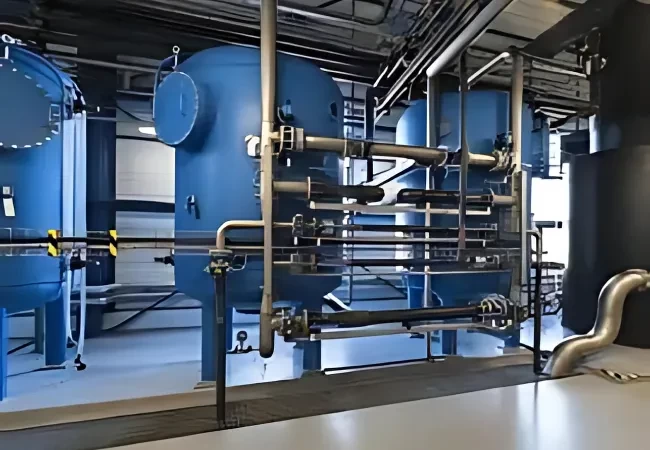Mixed Bed Deionizer Water System
Mixed Bed Units are an ion exchange method used where superior water quality is needed. They are typically the last treatment step in the water treatment process train. They are normally positioned downstream of either individual two-bed working ion exchange units or reverse osmosis systems, further treating the effluent of these demineralizers.
For low TDS (Total Dissolved Solids) waters, they can be used as stand-alone ion exchange units. In this application they are often referred to as “Working Mixed Beds”. In condensate polishing applications, you can use Mixed Bed Ion Exchange to remove condensate contamination before reuse.
Mixed Beds are ion exchangers that have both Cation and Anion resins, mixed in a single vessel. The resin bed is in the both H-OH form. These units are normally designed so that they can be automatically operated, with all the necessary internals, instruments, components and controls. Each unit is mounted on a rigid, structural steel skid base.
The last traces of TDS and silica can be removed on a resin bed where highly regenerated strong acid cation and strong base anion resins are mixed. Mixed bed units deliver an excellent treated water quality, but are complicated to regenerate, as the resins must first be separated by back washing before regeneration.
Additionally, they require large amounts of chemicals, and the hydraulic conditions for regeneration are not optimal. Therefore, mixed beds are usually only used to treat pre-demineralised water, when the service run is long. Mixed bed polishing produces water with less than 1.0 µS/cm conductivity a conductivity of less than 1.0 µS/cm. With a sophisticated design and appropriate resins, the conductivity of pure water.
3 Advantages of Mixed Bed Deionizer Water System
- High Purity: Provides very high-quality water, suitable for sensitive applications like pharmaceuticals and electronics.
- Efficient: Combines cation and anion exchange in one step, improving efficiency and reducing operational complexity.
- Continuous Operation: Can be used for continuous, high-flow applications, ensuring a steady supply of deionized water.

Water Treatment Systems
- Reverse Osmosis plant
- Multi Media Filter
- High Rate Solid Contact Clarifier - HRSCC
- PRO ATHENA
- BEV Systems
- PRO MINI
- HERO Modular Systems
- SeaTECH Series
- SKYLINE Seawater RO
- SeaPRO E-Series
- Turbidity Treatment
- Mineral Dosing
- Iron Removal
- Silica Removal
- Seawater Desalination
- Brackish Water Reverse Osmosis (RO)
- Electrodeionization (EDI)
- Ozonation & UV
- Closed Circuit Reverse Osmosis
- Sewage Treatment Plant (STP)
- Effluent treatment Plant (ETP)
- Odour Control System
- Anaerobic Reactor (UASBR)
- DAF - Dissolved Air Flotation
- MBBR-Effluent treatment
- Membrane Bio Reactor
- Continuous Fill Batch Reactor
- Sequential Batch Reactor (SBR)

